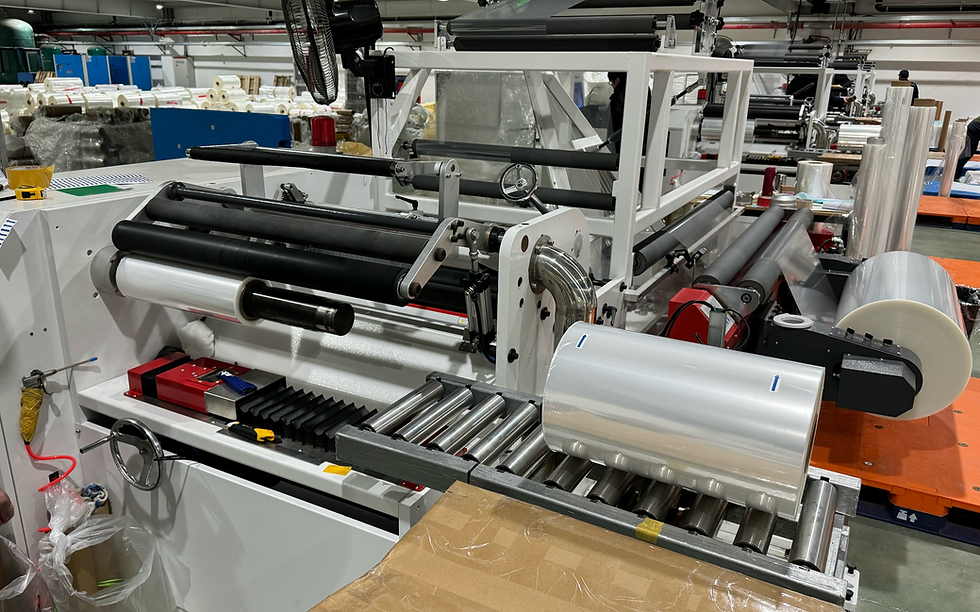How to Choose the Right Flexible Packaging Film Based on Material Properties? — A Comprehensive Guide to Mainstream Packaging Materials
- Amax Chemical

- May 8
- 2 min read
In the flexible packaging industry, selecting the right film material impacts not only product protection and shelf appeal but also production efficiency and cost control. This article provides a complete overview of common packaging films—such as BOPP, CPP, PET, LDPE—and offers guidance to help you make informed decisions in a dynamic market.

Key Material Properties & Recommendations
Material | Advantages | Disadvantages | Applications |
BOPP (Biaxially Oriented Polypropylene) |
|
Moderate oil resistance ✗ |
Snack bags, Transparent outer packaging, Label films |
CPP/TQPP (Cast Polypropylene/ Modified Polypropylene) |
| Poor oxygen barrier properties ✗ | Inner layer of composite packaging, Boilable bags, High-temperature Heat-sealing films |
PET (Polyethylene Terephthalate) |
| Non-heat-sealable Poor alkali resistance ✗ | Beverage bottles Electronic product packaging High-strength shrink films |
PVC (Polyvinyl Chloride) |
| Poor organic solvent resistance Average processability ✗ |
Medical packaging Shrink films Short-term food packaging |
LDPE/LLDPE (Low-Density/ Linear Low-Density Polyethylene) |
|
Low tensile strength Poor oil resistance ✗ |
Plastic bags Cling film Agricultural films |
HDPE (High-Density Polyethylene ) |
| Poor transparency and gloss ✗ | Heavy-duty packaging bags Bottle caps Moisture-proof packaging |
Cellophane |
| Poor chemical resistance Low vapor barrier properties ✗ | Candy packaging Eco-friendly short-term packaging (usually needs composite materials for enhanced barrier properties) |
Packaging Selection Trends & Market Insights
Stricter Sustainability Regulations
The EU’s Packaging and Packaging Waste Regulation (PPWR) is driving a shift toward recyclable and mono-material structures. Films like BOPE, MDO-PE, and PP-based materials are replacing complex multi-layer films (e.g., PET/AL/PE) to support circular economy goals. Mandatory minimum recycled content is also being introduced (e.g., 40% for food-contact PET packaging by 2030).
Growing Demand for Green Packaging
Eco-friendly materials such as PLA, PBS, and compostable films are gaining popularity—especially in single-use packaging for food delivery and personal care sectors.
Cost-Effective Structures Gaining Ground
Structures like BOPP+CPP are replacing traditional PET+PE in light-duty packaging (e.g., biscuits, snacks, bread) due to their transparency, sealability, and recyclability—offering both performance and cost efficiency.
Rise of Functional Films
Cold chain foods demand anti-fog films, ready-to-eat products require easy-tear films, and powder packaging increasingly relies on high-barrier films (e.g., EVOH, AlOx, SiOx) for extended shelf life and product integrity.
What Can Amax Offer?

Amax supplies a range of high-quality raw materials for flexible packaging film structures, including:
• EVA, POE, PP, LDPE
• Partnered with top global brands: Mitsui Chemicals, LyondellBasell, INEOS, and more
• Serving packaging, piping, adhesives, and other industries across Asia and worldwide
We understand the rigorous performance demands of diverse packaging applications—and we’re happy to share our material expertise and technical insights.
Looking for Material Support?
For technical datasheets, product brochures, or sample support, feel free to contact the Amax team: contact@amaxchemical.com
Let us help you enhance your packaging performance—and simplify material selection.



